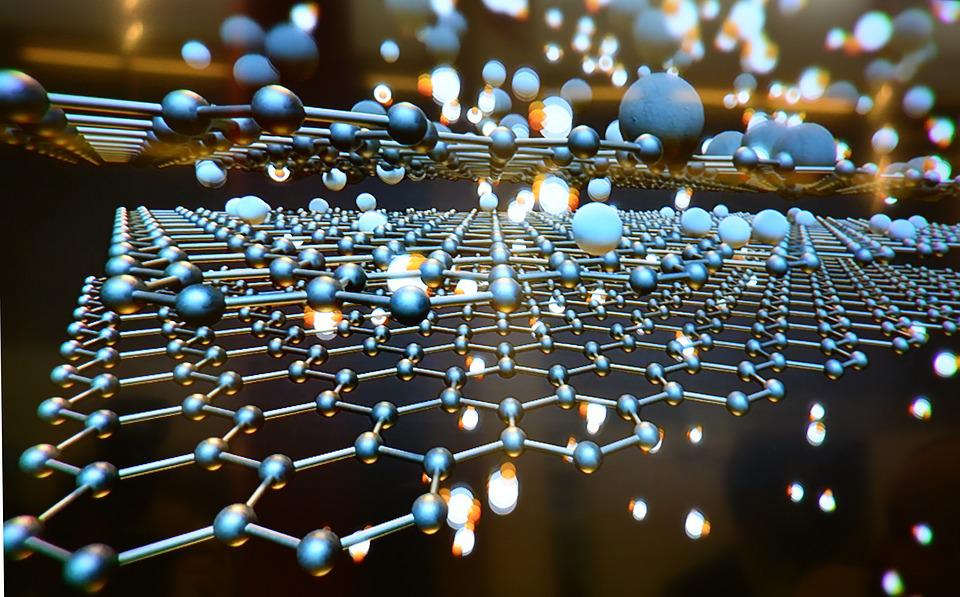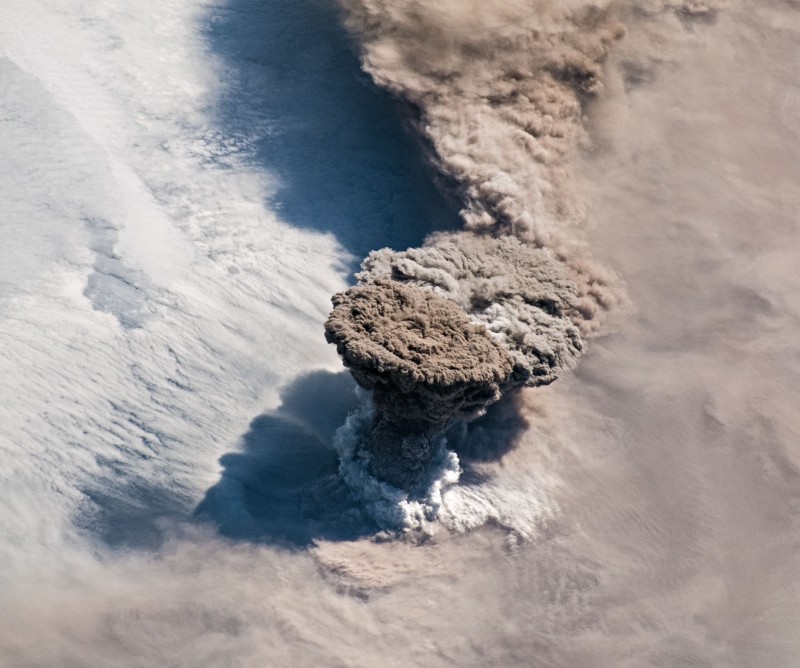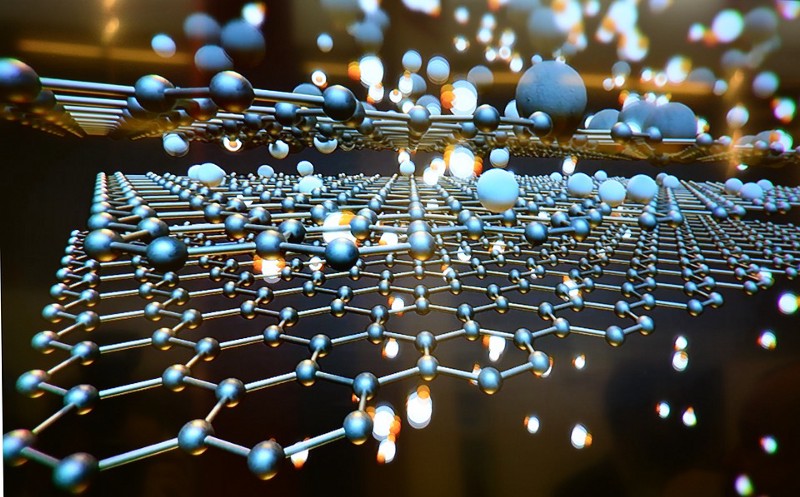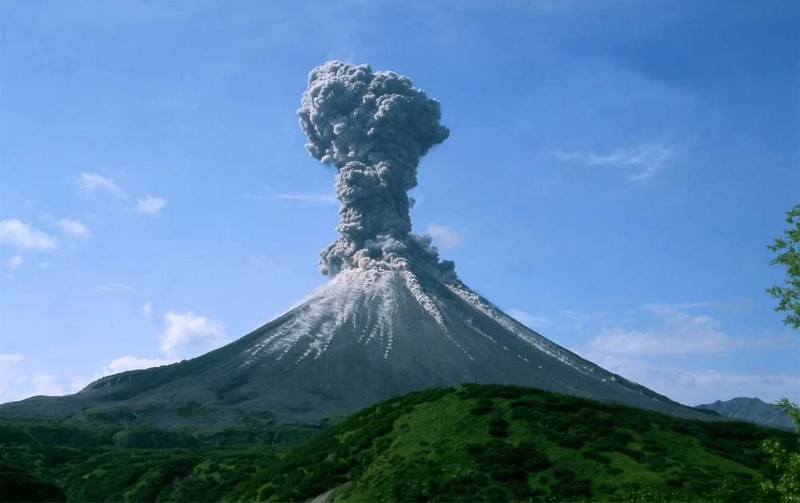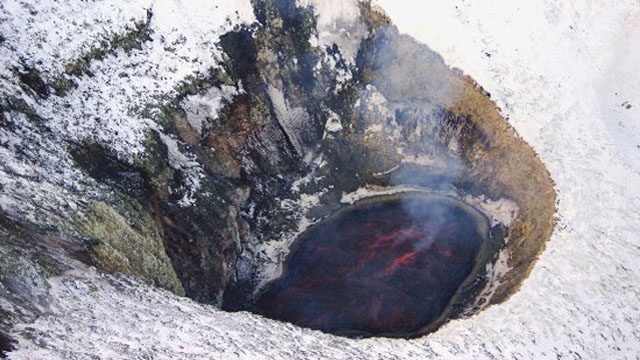A closer look at the Eyjafjallajökull ash

nThe ash plume from Eyjafjallajökull, piercing the cloud deck above the volcano. Image courtesy of the Icelandic Met Office, taken on May 13, 2010. See the latest report on the eruption.
nn
With all the rapid fire news on eruptions as of late, combined with my busy schedule during the school year, I haven’t been able to post as many articles on some basic aspects of volcanology. I will try to remedy some of this over the summer and the first will look at volcanic ash and specifically the ash from Eyjafjallajökull. I’ve taken some photomicrographs of the ash from Eyjafjallajökull (sent to me graciously by Jón Frímann) so we can discuss the composition and morphology of the ash.
nn
So, first things first: all volcanic ash is not the same! This should be no surprise to many of you as it just makes sense – different magmas produce different styles of eruption based on the physical properties of the magma, so the ash produced should be different. This is not just compositionally, but also the shape and size of the ash shards will vary with the type of eruption. These characteristics – composition and morphology – are two of the ways that volcanologists can use to match ash deposits with specific eruptions as they can be diagnostic features. This is then used to do tephrachronology, to date ash layers in order to give temporal constraints to the rock record.
nn
Ash is actually made of a number of different materials – what most people will think of first is volcanic glass. Most ash is produced by fragmentation of magma when escaping gases will form bubbles and “pop”. This is why most ash looks like cuspate shards – the walls of bubbles – because that is exactly what they are. However, ash isn’t merely volcanic glass. It can also have a significant component of mineral grains/fragments (from the magma) and/or pulverized chunks of previously erupted lava that gets fragmented in the eruption. The proportions of glass, minerals and lithic fragments can also help identify the source of the ash (if it is not known).
nn
Now, so far, the eruptions at Eyjafjallajökull have been characterized as anything from strombolian to surtseyan to phreatoplinian to microplinian depending on the amount of water from the melting Gígjökull glacier involved. This will have an effect on the ash production because as we have seen, the more water involved, the more explosive the eruption seems to become. This means more fragmentation of the magma as it reaches the vent and interacts with the meltwater. However, there also appears to be a component of gases escaping from the mixed (basalt and silicic “mush”) magma itself, causing fragmentation of the magma without water. So, what does this stuff look like?
nn
Note, for all of these images, click on it to see a larger version.
nn
nEyjafjallajökull ash under a petrographic microscope in crossed-polarized light at ~40x. Note the blocky nature of the ash and the variety of color. Image by Erik Klemetti.
nn
The Eyjafjallajökull ash is actually not what I was expecting – it is blocky and crystal-rich rather than very glassy and cuspate. Now, I believe the sample I have was collected fairly distal from the vent, so the ash might look different very close to the fountaining, but this is likely representative of the ash that is disrupting the flights around Europe. Here is another look:
nn
nEyjafjallajökull ash under a petrographic microscope in crossed-polarized light at ~40x. Image by Erik Klemetti.
nn
In this image, I’ve tried to identify the minerals in the ash. There is a lot of white to clear plagioclase feldspar (differentiated from quartz by obvious cleavage planes) and both olivine and pyroxene – now, they are a little difficult to definitively ID in this ash, but there are plenty of objects in the ash that show properties of these minerals under the polarizing microscope. These minerals are all common in basaltic-to-andesitic magmas, so no large surprise here. There also is abundant grey and brown volcanic glass (some of which is black in cross-polarized light) which looks to be full of oxides like magnetite – the tiny black specks in the glass shards. Here is a zoomed in image of ash:
nn
nEyjafjallajökull ash under a petrographic microscope in crossed-polarized light at ~100x. Image by Erik Klemetti.
nn
This just shows some more detail on the mineral grains and the glass shards. So, what can we say about the ash? The minerals and glass are rather blocky, which is more typical for phreatomagmatically generated shards rather than magmatically (only) generated shards. This seems to back up the idea that the explosivity of the eruption is being dominantly driven by interaction with water. However, you would really need to examine some of this ash with an scanning electron microscope (SEM) to get the full grasp on the morphology.
nn
nEyjafjallajökull ash under a petrographic microscope in crossed-polarized light at ~40x. Image by Erik Klemetti.
nn
This is, of course, only a cursory look at the ash from Eyjafjallajökull, but it is fascinating to see that by just glancing at the shapes of the ash shards in the deposits that inferences about the style of eruption can be drawn. Further study of the ash by the legions of volcano experts will likely show that the ash has a fairly complex origin, but at least the observations many of us have made of the eruption are reflected in the ash.
nn
For more information on ash morphology, see:
nn
– Cas, R.A.F. and Wright, J.V., 1987, Volcanic Successions: Modern and Ancient. Chapman and Hall, New York. (specifically, Chapter 3.5 pp. 47-51).
n- Francis, P. and Oppenheimer, C., 2004, Volcanoes: Second Edition. Oxford University Press (specifically, Chapter 8)
n- Lockwood, J.P. and Hazlett, R.W., 2010, Volcanoes: Global Perspectives. Wiley-Blackwell (specifically, Chapter 7).




